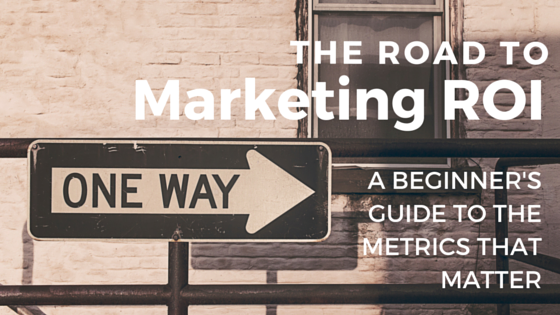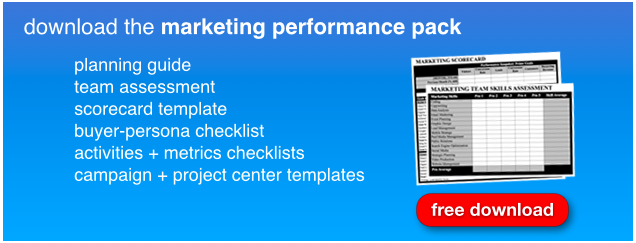
It’s never been more important for marketers to understand their company’s business fundamentals. This sounds obvious. We should know—and understand—how our companies make money, right?
Apparently it’s time for a wake up call. A full 80% of CEOs don’t trust their marketing teams, according to new research from Kapost.
Let that sink in. Our job is to develop credible, profitable connections with customers—and with the people that hire us.
We must do better. Marketers are under more pressure than ever to measure their impact and prove ROI.
To help achieve that goal, I’ve listed below six business fundamentals marketers should measure and how to measure them. This list is a starting point: You may need other or additional metrics depending on your company’s business model and / or available technology.
1. Average Cost Per Lead (CPL)
What is it?
The average amount it costs to generate a lead, online or offline. This metric should also be calculated per marketing channel to determine which one generates leads in the most cost-effective manner.
Keep in mind that your attribution model will determine your results here. There are a number of different attribution models to choose from.
Why does it matter?
Cost per lead shows executives exactly how many leads their marketing budget generates, which makes it easier for you to prove marketing ROI. Cost per lead is also a valuable metric to improve lackluster marketing efforts by identifying which channels work best.
How do I calculate it?
Divide how much you spent on marketing by the number of new leads generated over a given time period. For average cost per channel, divide how much you spent on marketing for a specific channel by the number of leads that channel generated.
Marketing spend / new leads generated = Average cost per lead
2. Lead-to-Customer Conversion Rate
What is it?
The rate at which leads turn into customers, measured as a percentage.
Why does it matter?
You don’t always have to spend more or boost traffic if you want to sell more. This metric makes it easier to find quick wins that increase conversions on the traffic you already have. It also prevents you from spending too much on channels that don’t convert well.
How do I calculate it?
Divide the number of customers by the number of leads generated over a given time period. Move the decimal place two spaces to the right, and voila! Lead-to-customer conversion rate. Do the same for individual marketing channels to determine which do the best job of turning prospects into customers.
Number of customers / number of leads = Lead-to-customer conversion rate
3. Cost of Customer Acquisition (COCA)
What is it?
The total amount you spend to get a customer.
Why does it matter?
This metric is used by investors and company execs to determine a company’s profitability. Marketers can use it to show the effectiveness of campaigns in real dollar values. Expect bigger budgets and higher praise if you can prove that campaigns positively impact this metric.
How do I calculate it?
Divide the total of all costs associated with getting a customer by the number of customers acquired over a given time period.
Total marketing and sales spend / number of customers = Cost of customer acquisition
(Going to Content Marketing World 2015? Learn more about this topic at PR 20/20 CEO Paul Roetzer's talk, The Content Marketing Metrics That Matter: How to Measure, Visualize and Report on Content Marketing Performance.)
4. Customer Lifetime Value (LTV)
What is it?
The total revenue generated by a customer over the entire business relationship with that customer. (Important note: Revenue does not mean profit.)
Why does it matter?
LTV shows how marketing (especially the loyalty stage of the funnel) impacts both short-term and long-term business health. You can begin budgeting out to the dime how marketing spend drives real business results once you accurately calculate LTV.
How do I calculate it?
We provide a basic calculation below, but there are other more complex ways to approach LTV in this infographic. The simple version: Calculate your average customer value per week, which is the amount customers spend over seven days.
Then, multiply this by 52 (for the weeks in a year). Finally, take the resulting number and multiply it by your average customer lifespan (the average amount of time customers have a business relationship with you).
(Average customer value per week x 52) x (Average customer lifespan) = LTV
5. Gross Lifetime Margin of a Customer
What is it?
The profit your company makes off a single customer over the lifetime of the customer’s relationship with your business.
Why does it matter?
Don’t confuse revenue and profit. Impacting revenue is good, but revenue is a top-line number: you can generate more revenue while generating little, no or even negative profits. Gross lifetime margin per customer is the money left over from the revenue generated by that customer after accounting for expenditures.
This metric proves to executives you’re not just looking at how marketing affects revenue, but also how it impacts the business’ actual cash flow—an important distinction that’s critical to painting an accurate picture of overall business health.
How do I calculate it?
Apply your company’s profit margin per customer (get this from your executive team) to your LTV. For instance, if my company makes a 20% profit on each customer and LTV is $1,000, then my gross lifetime margin of a customer is $200. You’ll want to express your profit margin percentage as a decimal and multiply it by LTV. So, in the above: .20 x 1,000 = 200.
Profit margin (as a decimal) x LTV = Gross lifetime margin
6. New Customers Per Month
What is it?
The number of new customers who buy from you in a given month. You may also want to calculate how much new customers spend on average, depending on your business model.
Why does it matter?
New customers per month is the last piece of our puzzle. Now that you know what a customer is worth, you’re poised to show exactly how much revenue and profit your campaigns drive by reporting how many new customers per month those campaigns attract or assist in conversion.
How do I calculate it?
You won’t need to calculate it as much as you’ll need to find it. New customer numbers should show up in a marketing automation system or CRM if you have one. Otherwise, you’ll need to get this number on a regular basis from your head of sales.
Metrics Are Just One Piece of the Puzzle—Learn About the Rest
Identifying the metrics that matter is critical to building a marketing program that performs. But it’s not the whole story. You’ll also need the right talent and technology to drive growth with marketing, and a strategy to pull it all together.
It’s all in the Marketing Performance Pack, our free toolkit that's designed to help you improve your marketing. Get it today.

%20Logo_BlueOrange_Trademark.png?width=800&height=269&name=Ready%20North%20(RN)%20Logo_BlueOrange_Trademark.png)




.jpg?width=300&name=Services%20Hub%203%20(3).jpg)


